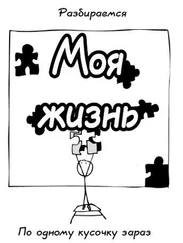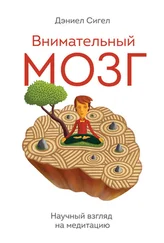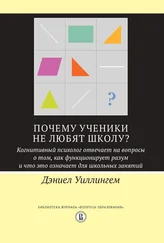Дэниел Сигел - Разум
Здесь есть возможность читать онлайн «Дэниел Сигел - Разум» весь текст электронной книги совершенно бесплатно (целиком полную версию без сокращений). В некоторых случаях можно слушать аудио, скачать через торрент в формате fb2 и присутствует краткое содержание. Город: Москва, Год выпуска: 2019, ISBN: 2019, Издательство: Манн, Иванов и Фербер, Жанр: Психология, на русском языке. Описание произведения, (предисловие) а так же отзывы посетителей доступны на портале библиотеки ЛибКат.
- Название:Разум
- Автор:
- Издательство:Манн, Иванов и Фербер
- Жанр:
- Год:2019
- Город:Москва
- ISBN:9785001172857
- Рейтинг книги:4 / 5. Голосов: 2
-
Избранное:Добавить в избранное
- Отзывы:
-
Ваша оценка:
- 80
- 1
- 2
- 3
- 4
- 5
Разум: краткое содержание, описание и аннотация
Предлагаем к чтению аннотацию, описание, краткое содержание или предисловие (зависит от того, что написал сам автор книги «Разум»). Если вы не нашли необходимую информацию о книге — напишите в комментариях, мы постараемся отыскать её.
Разум — читать онлайн бесплатно полную книгу (весь текст) целиком
Ниже представлен текст книги, разбитый по страницам. Система сохранения места последней прочитанной страницы, позволяет с удобством читать онлайн бесплатно книгу «Разум», без необходимости каждый раз заново искать на чём Вы остановились. Поставьте закладку, и сможете в любой момент перейти на страницу, на которой закончили чтение.
Интервал:
Закладка:
Damasio, A.R. (2000). The feeling of what happens: Body and emotion in the making of consciousness. Orlando, FL: Harcourt Brace.
Damasio, A.R. (2005). Descartes’ error: Emotion, reason, and the human brain. New York, NY: Penguin.
Davidson, R. J. & Begley, S. (2012). The emotional life of your brain: How its unique patterns shape how you feel, think and live — and how you can change them. New York, NY: Plume/Penguin Random House.
Dinan, T. G., Stilling, R. M., Stanton, C., & Cryan, J. F. (2015). Collective unconscious: how gut microbes shape human behavior. Journal of Psychiatric Research, 63, 1–9.
Doidge, N. (2015). The brain’s way of healing: Remarkable discoveries and recoveries from the frontiers of neuroplasticity. New York, NY: Viking.
Doll, A., Hölzel, B. K., Boucard, C. C., Wohlschläger, A. M., & Sorg, C. (2015). Mindfulness is associated with intrinsic functional connectivity between default mode and salience networks. Frontiers in Human Neuroscience, 9, 461.
Dorling, J. (1970). The dimensionality of time. Am J. Phys., 38:539–540.
Dossey, L. (2014). One mind: How our individual mind is part of a greater consciousness and why it matters. New York, NY: Hay House.
Dunbar, R., Gamble, C., Gowlett, J. (Eds.). (2010). Social brain, distributed mind, New York, NY: Oxford University Press.
Dweck, C. (2006). Mindset: The new psychology of success. New York: Ballantine / Random House.
Edelman, G. M. (1993). Bright air, brilliant fire: On the matter of the mind. New York, NY: Basic Books.
Edelman, G.M., & Tononi, G. (2000). A Universe of consciousness: How matter becomes imagination. New York, NY: Basic Books.
Edwards, B. (2012). Drawing on the right side of the brain. New York, NY: Tarcher.
Einstein, E. (1950). Letter in the New York Times (29 March, 1972) and the New York Post (28 November, 1972).
Ellis, G.F.R. (2008). On the flow of time. Essay for Fqxi contest on the nature of time. www.Fqxi.org.
Engel, A.K., Fries, P., & Singer, W. (2001). Dynamic predictions: Oscillations and synchrony in top-down processing. Nature Neuroscience, 2, 704–716.
Erneling, C.E. & Johnson, D.M. (Eds.). (2005). The mind as a scientific object, New York, NY: Oxford University Press.
Fair, D.A., Cohen, A.L., Dosenbach, N.U.F., Church, J.A., Miesen, F.M., March, D.M., Raichle, M.A., Petersen, A.E., & Schlagger, B.A. (2008). The maturing architecture of the brain’s default mode circuitry. PNAS, 105(10) 4028–4032.
Fair, D.A., Dosenbach, N. U. F., Church, J. A., Cohen, A. L., Brahmbhatt, S., Miezin, F. M., Barch, D. M., Raichle, M. E., Peterson, S. E., & Schlagger, B. L. (2007). Development of distinct control networks through segregation and integration. PNAS, 104 (33), 13507–13512.
Faraday, M. (1860). Course of six lectures on the various forces of matter, and their relations to each other. Delivered before a juvenile auditory at the Royal Institute of Great Britain during the Christmas holidays of 1859–60, William Crookes (Ed.). New York, NY: Harper and Brothers Publishers.
Farb, N.A.S., Segal, Z.V., Mayberg, H., Bean, J., McKeon, D., Fatima, Z., & Anderson, A.K. (2007). Attending to the present: Mindfulness meditation reveals distinct neural modes of self-reference. Social Cognitive and Affective Neuroscience, 2(4), 313–322.
Felitti, V., Anda, R.F., Nordenberg, D, Williamson, D.F., Spitz, A.M., Edwards, V., Koss, M.P., & Marks, J.S. (1998). Relationship of childhood abuse and household dysfunction to many of the leading causes of death in adults. American Journal of Preventive Medicine, Volume 14, Issue 4, 245–258.
Feng, E.H. & Crooks, G.E. (2008). Length of time’s arrow. Phys. Rev Lett. 101 (9): 090602.
Fredickson, B. (2013). Love 2.0: Finding happiness and health in moments of connection. New York, NY: Hudson/Penguin.
Freud, S. (1955). The standard edition of the complete psychoanalytical works of Sigmund Freud, (edited and translated by James Strachey). London, England: Hogarth Press.
Gambini, R. & Pullin, J. (2008). Free will, undecidability, and the problem of time in quantum gravity. Essay for Fqxi contest on the nature of time. www.Fqxi.org.
Gazzaniga, M. (2004). The cognitive neurosciences III. Cambridge, MA: MIT Press.
Gilbert, P. (2009). The compassionate mind: A new approach to life’s challenges. Oakland, CA: New Harbinger.
Gilbert, P. (2015). The evolution and social dynamics of compassion. Social and Personality Psychology Compass, 9, 239–254. doi: 10.1111/spc3.12176.
Goldstein, B. & Siegel, D.J. (2013): The Mindful Group: Using mindbody-brain interactions in group therapy to foster resilience and integration. In D.J. Siegel & M.F. Solomon (Eds.), Healing Moments in Psychotherapy, (pp. 217–242). New York, NY: W.W. Norton & Company.
Gottman, J.D. (2011). The science of trust: Emotional attunement for couples. New York, NY: W.W. Norton & Company.
Graziano, M. (2014). Consciousness and the social brain. New York, NY: Oxford University Press.
Harrell, S.P. (2000). A multidimensional conceptualization of racism-related stress: Implications for the well-being of people of color. American Journal of Orthopsychiatry, 70 (1): 42–57.
Hassin, R.R., Uleman, J.S., & Baragh, J.A. (2005). The new unconscious. New York, NY: Oxford University Press.
Hattiangadi, J. (2005). The emergence of minds in space and time. In Erneling, C.E. & Johnson, D.M. (Eds.), The mind as a scientific object (pp. 79–100). New York, NY: Oxford University Press.
Hawking, S. & Ellis, G. (1973). The large-scale structure of space-time. Cambridge: Cambridge University Press.
Hensen, B., Bernien, H., Dreau, A.E., Reiserer, A., Kalb, N., Blok, M.S., Ruitenberg, J., Vermeulen, R.F.L., Schouten, R.N., Abellan, C., Amaya, W., Pruneri, V., Mitchell, M.W., Markham, M., Twitchen, D.J., Elkouss, D., Wehner, S., Taminau, T.H., & Hanson, R. (2015). Experimental loophole-free violation of a Bell inequality using entangled electron spins separated by 1.3 km. Nature, 526, 682–686 (29 October 2015) doi: 10.1038/nature15759.
Hrdy, S.B. (2009). Mothers and others: The evolutionary origins of mutual understanding. Cambridge, MA: Harvard University Press.
Hubel, D & Wiesel, T.N. (1970): The period of susceptibility to the physiological effects of unilateral eye closure in kittens, Journal of Physiology, 206(2): 419–436
Hutchins, E. (1995). Cognition in the wild. Cambridge, MA: MIT Press.
James, W. (1890). Principles of psychology. New York: H. Holt and Company.
Johnson, D.M. (2005). Mind, brain, and the Upper Paleolithic, in: Erneling, C.E. & Johnson, D.M. (Eds.). The mind as a scientific object, pages 499–510. New York, NY: Oxford University Press
Johnson, P. (1987). A history of the Jews. New York, NY: Harper and Row.
Johnson, R. L. (2005) Gandhi’s experiments with truth: Essential writing by and about Mahatma Gandhi, Lanham, MD: Lexington Books.
Kabat-Zinn, J. (2005). Coming to our senses: Healing ourselves and the world through mindfulness. New York, NY: Hyperion.
Kabat-Zinn, J. (2013). Full catastrophe living (revised edition): Using the wisdom of your body and mind to face stress, pain, and illness. New York, NY: Bantam Random House.
Kafatos, M. & Siegel, D.J. (2015). Quantum physics, consciousness, and psychotherapy. Audio recordings of a professional workshop. Santa Monica, CA: Mindsight Institute.
Keller, H. (1903). The story of my life. New York, NY: Double Day, Page & Co.
Keltner, D. (2009). Born to be good: The science of a meaningful life. New York, NY: W.W. Norton & Company.
Keltner, D., Marsh, J., & Adams-Smith, J. (Eds.). (2010). The compassionate instinct: The science of human goodness. New York, NY: W.W. Norton & Company.
Kimov, P.V., Falk, A.L., Christie, D.J., Dobrivitski, V.V., & Awschalom, D.D. (2015). Quantum entanglement at ambient conditions in a macroscopic solid-state spin ensemble. Science Advances, 1(10) doi: 10.1126/sciadv.1501015.
Читать дальшеИнтервал:
Закладка:
Похожие книги на «Разум»
Представляем Вашему вниманию похожие книги на «Разум» списком для выбора. Мы отобрали схожую по названию и смыслу литературу в надежде предоставить читателям больше вариантов отыскать новые, интересные, ещё непрочитанные произведения.
Обсуждение, отзывы о книге «Разум» и просто собственные мнения читателей. Оставьте ваши комментарии, напишите, что Вы думаете о произведении, его смысле или главных героях. Укажите что конкретно понравилось, а что нет, и почему Вы так считаете.

![Дэниел Гоулман - Измененные черты характера [Как медитация меняет ваш разум, мозг и тело]](/books/26978/deniel-goulman-izmenennye-cherty-haraktera-kak-med-thumb.webp)










